I Tried Every Bottle of Makgeolli at H Mart — These Are the Ones Worth Drinking

You may know of soju, the green bottled clear liquor often found at Korean barbecue restaurants, but have you heard of makgeolli? Makgeolli is Korea’s original alcohol, a farmer’s liquor that was easily made at home by simply fermenting rice, nuruk (a wild fermentation starter), and water. It’s fermented in just a week or two and ready to drink after a light filtration.
Home-brewed or small-batch brewed makgeolli are usually unpasteurized to preserve the wild fermentation, which in turn makes for a short shelf life. Thus, most makgeolli found at supermarkets like H Mart are pasteurized to ensure they can be shipped at room temperature and kept shelf-stable. You’ll just need to chill the makgeolli prior to drinking.
When you’re ready to drink makgeolli is when the fun really starts. Traditionally, makgeolli is served in a copper-colored aluminum tea kettle that is portioned into copper-aluminum rice bowls. Drinking out of these wider serving vessels rather than glasses allows the scent of the makgeolli to really open up, as well as paying homage to the rice origins of the drink.
The Best Makgeolli
Most Classic Tasting: Walmae Rice Wine
Most Fizzy: Kooksoondang Draft Makgeolli
Most Well-Balanced: Makku Makgeolli
Even if you’re not serving out of kettles and bowls, you’ll have to exercise a bit of muscle before imbibing. Because makgeolli is loosely filtered, a fair amount of fine rice particles remain, giving the drink its iconic cloudy texture. When it’s been sitting for a while this sediment can separate, so you’ll just need to shake the makgeolli bottle lightly to mix it all up. Or don’t! Some Koreans like to drink just the separated clear liquid, called cheongju, for a lighter and more refined flavor. I personally like incorporating the sediment into the makgeolli (called takju) — the resulting creaminess is what sets makgeolli apart from any other liquor.
Don’t forget to set the table when having makgeolli as well. This drink is made for eating! The most classic pairing is makgeolli and jeon, or fried pancakes or fritters. The combo is incredibly nostalgic for Koreans on rainy days because the pitter patter of the rain recalls the sizzle of frying oil. But the two also taste great together, as the smooth milkiness of makgeolli rounds out the pleasant greasiness of the jeon. Other great pairings? Makgeolli and pork belly are also iconic, as well as any spicy marinated meats that you might be craving!
Makgeolli is such an important alcohol in Korean culture, so I love that H Mart has been carrying more varieties of it. It’s also lower ABV than soju, so it’s more readily found at H Marts that don’t carry soju or other liquors due to state restrictions. But I always get so overwhelmed by all the options. Which one is the best? Should I trust the labels on the bottles? I bought all six of the makgeolli bottles available at my local New York H Mart and tasted them one night to compare against each other (note that options may vary store to store). These are the three I loved and the three I would buy again.
3 Best Bottles of Makgeolli

Most Classic Tasting: Walmae Rice Wine, $5.99 for 1 liter
I haven’t seen Walmae often at the grocery store, and it immediately sets itself apart by being sold in one-liter bottles versus the 750-milliliter bottles of the other brands. It’s a pasteurized version of Jangsu Makgeolli, a fresh makgeolli that’s been made for over 60 years.
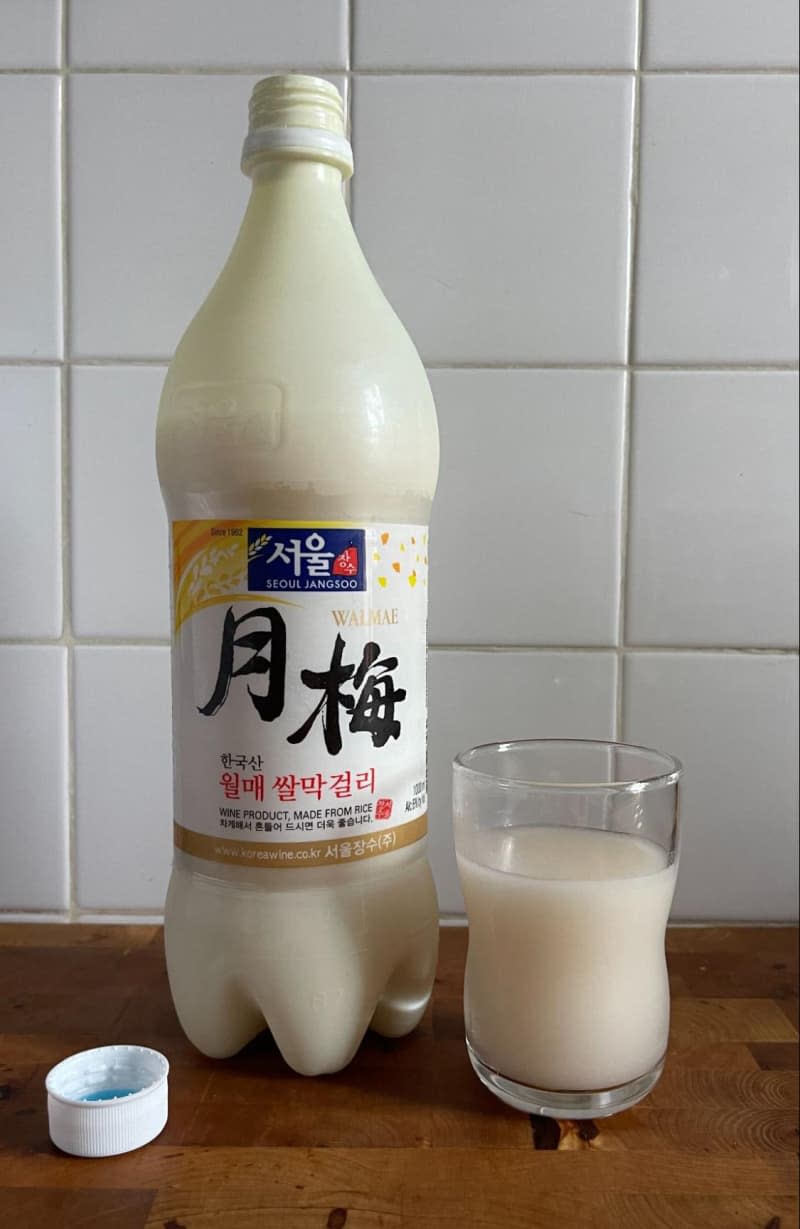
Immediately, Walmae has more flavor than some of the other makgeollis. It has a slightly milky smell, and tastes more creamy, yogurty, and fizzy. Surprisingly, it’s also more savory and tart than it is sweet, which is a trait I prefer in makgeolli. Oftentimes, a lot of makgeolli (especially supermarket brands) have a lot of sweetener added, so it’s nice to taste something that’s more milky and smooth. It has more of the classic makgeolli taste that I’m looking for, so I’ll definitely be stocking up on this for my Chuseok party next year.
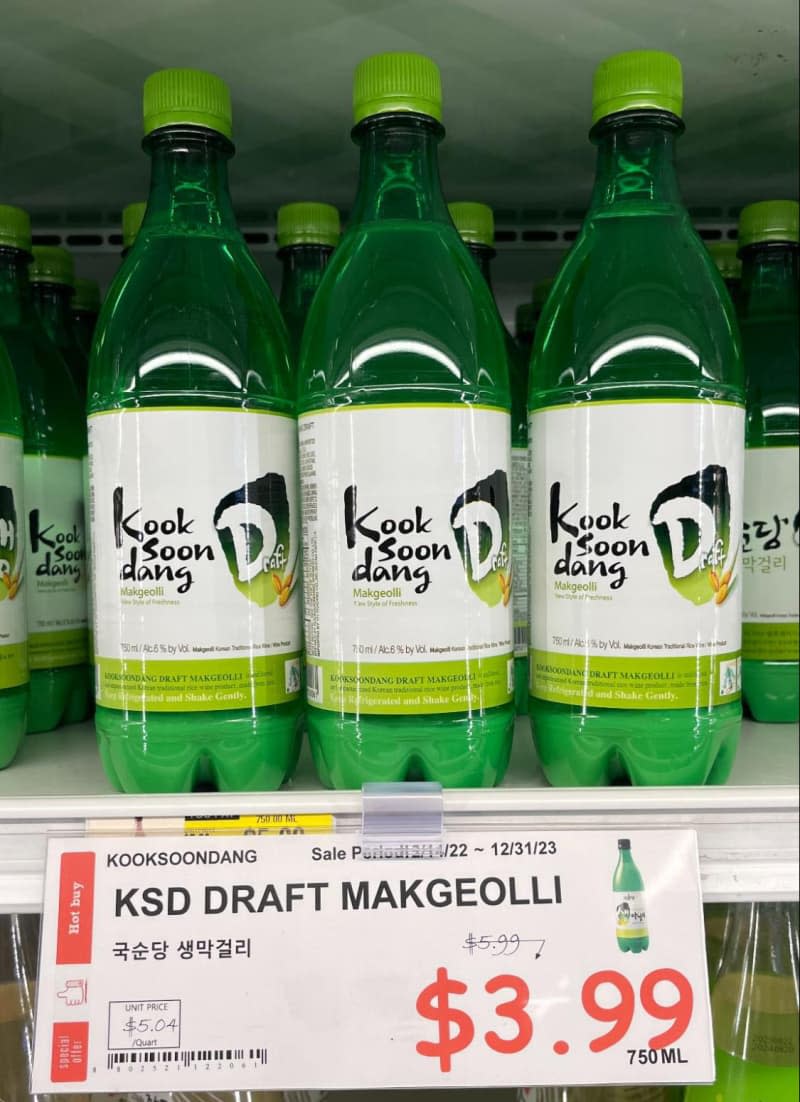
Most Fizzy: Kooksoondang Draft Makgeolli, $3.99 for 750 mL
Kooksoondang is the other of the two long-standing makgeolli offered at H Mart, and it’s the only one on this list that is unpasteurized. Therefore, it’s shipped and stored chilled at all times, versus being kept with the other drinks that don’t require refrigeration.

It was harder to get the makgeolli mixed in for this bottle; I really had to give it a few shakes back and forth to dislodge the sediment from the bottom. That also made it extremely carbonated! Kooksoondang was very fizzy and more citrusy, almost like a fermented milky soda akin to Yakult or Milkis. The flavor was nice and tart, with savory after-notes that would make this one pair really well with jeon.
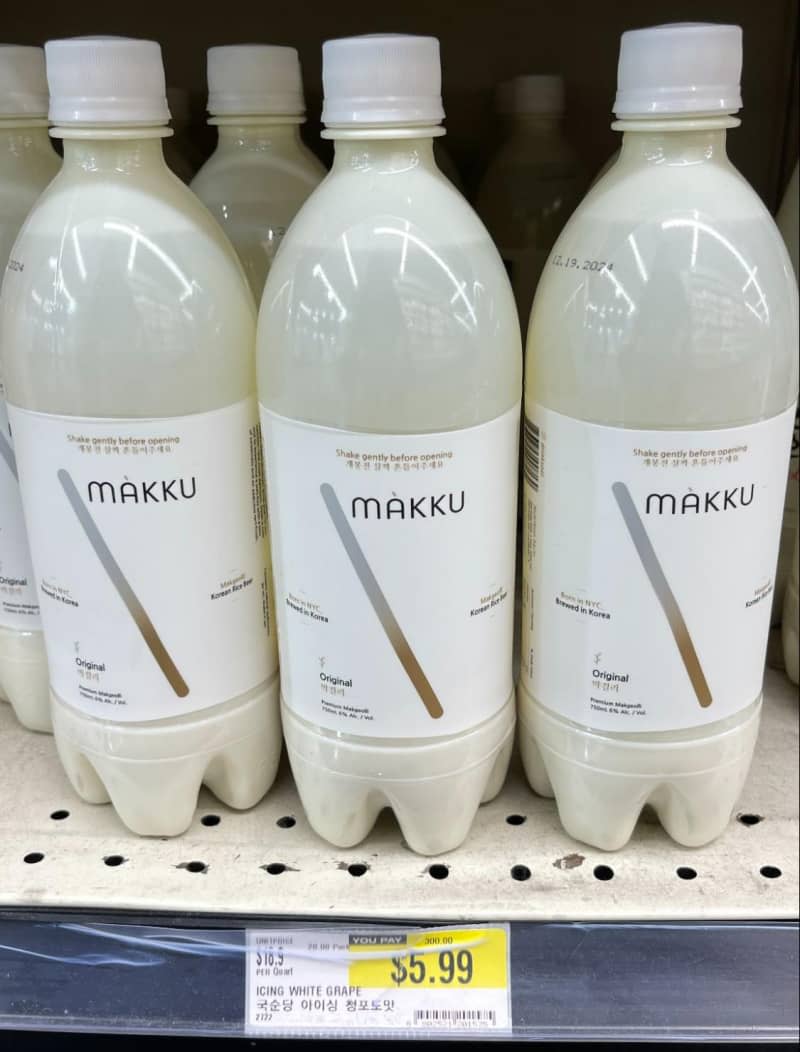
Most Well-Balanced: Makku Makgeolli, $5.99 for 750 mL
Full disclosure: I used to work for this company! Makku is a Korean American brand based out of New York, but the makgeolli is produced and imported from Korea. It’s been a bit since I’ve had it, and I’m reminded of why I liked it the first time I tried it.
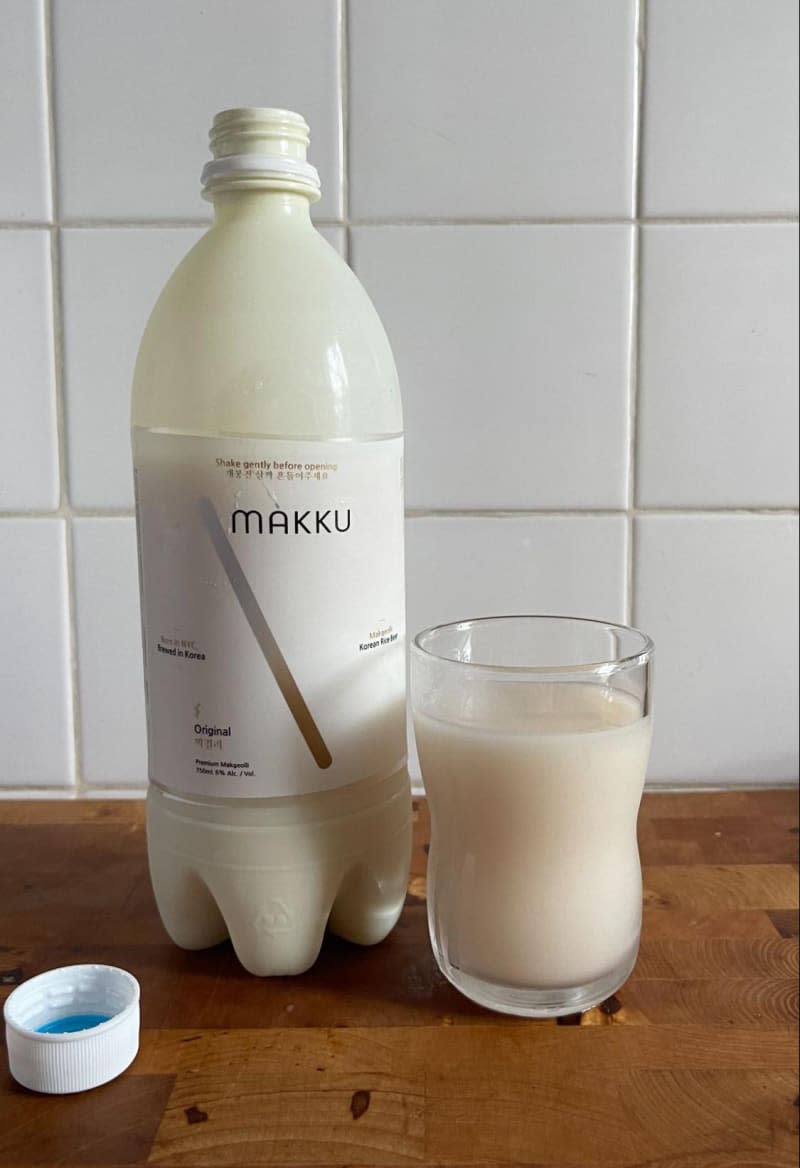
Makku smells pleasantly fermented and tastes both sweet and lactic-y. Overall, it’s quite well-balanced, especially after having tasted a wide variety of makgeolli that ranged from bland to sour. It has a nice finish that isn’t chalky as well, making it a good crushable makgeolli — perfect for parties.
3 Makgeolli You Should Skip

Too Light: Bohae Soony Makgeolli, $10 for 3 (750-mL) bottles
Soony is one of the two classic supermarket brands of makgeolli I’ve seen for years at H Mart. The thing that always makes me LOL about its Korean label is that it advertises that the makgeolli is pasteurized. I think it’s a way to convey that the makgeolli is very smooth and light, something reinforced by the brand’s name itself, which sounds similar to the Korean word for “gentle.”
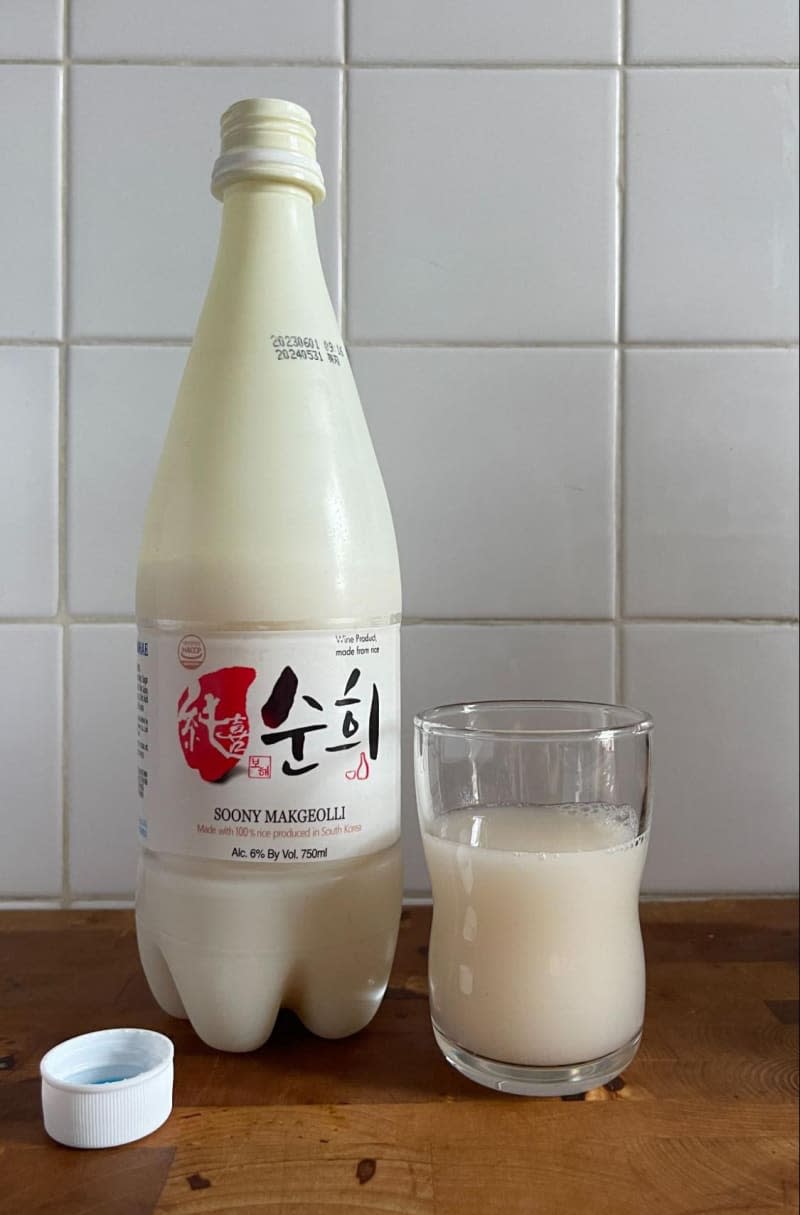
Upon opening (after shaking), Soony Makgeolli is light and not very carbonated or thick. It has a sharper nose where you can smell the fermented rice. The makgeolli tastes thin too, with a slight fizz on the tongue but finishes a bit chalky. While some tartness and sweetness lingers, this one is a bit too mild, on the verge of tasting bland. I think this one is a good pick if you prefer a lighter makgeolli, but it lacked flavor for me.

Too Chalky: Gyeongju Beopju Makgeolli, $3.99 for 750 mL
I’ve seen this one more in recent years, and was drawn to buying it for my recent Chuseok party because it hails from Gyeongju, a famously historical city in South Korea. In Korea, this makgeolli is specifically marketed as being able to be enjoyed two ways: first by pouring just the clear liquid to drink as cheongju, and then shaking it up halfway through to have as makgeolli.
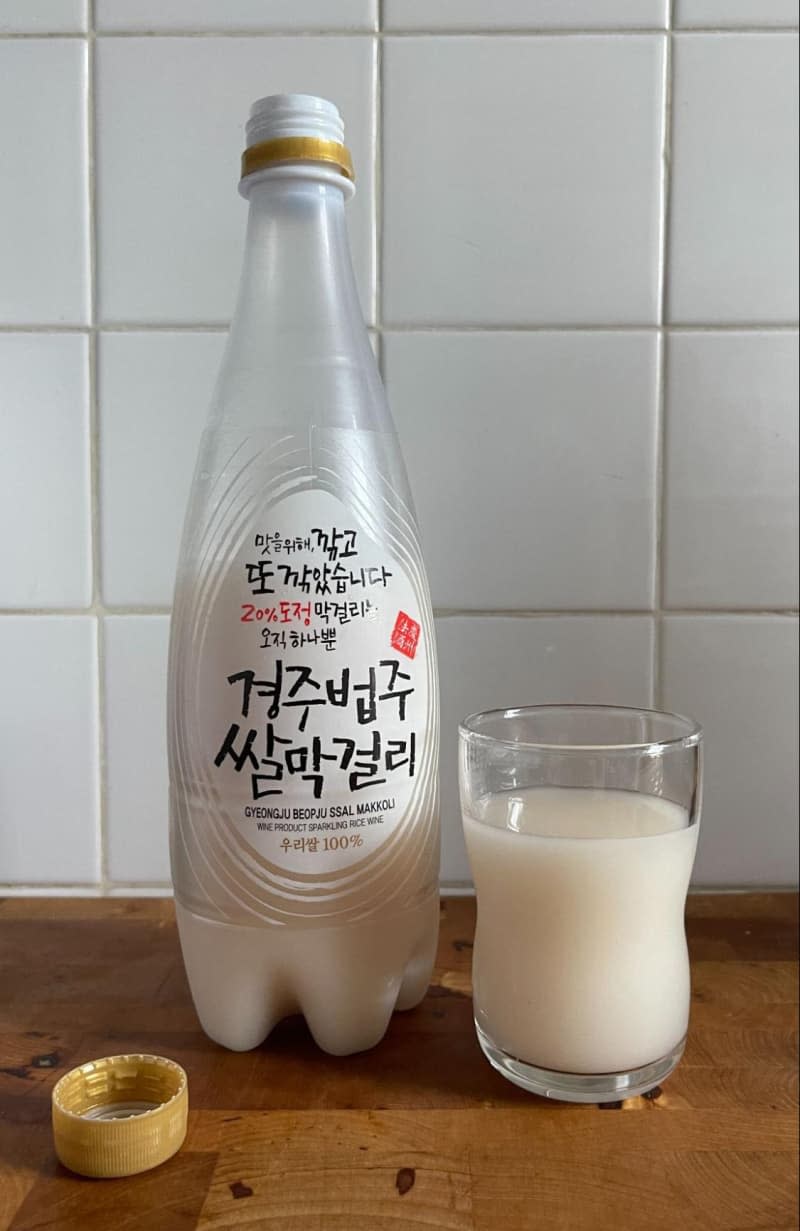
I skipped straight to the makgeolli part by mixing the bottle before drinking, and it is much thicker than the Soony Makgeolli. It smells and tastes slightly sweet and fizzy, but also finishes chalky. Ultimately it doesn’t taste like much. If anything, Gyeongju Beopju Makgeolli has a bit of a chemical flavor that grows the more I drink it, which is not super pleasing.
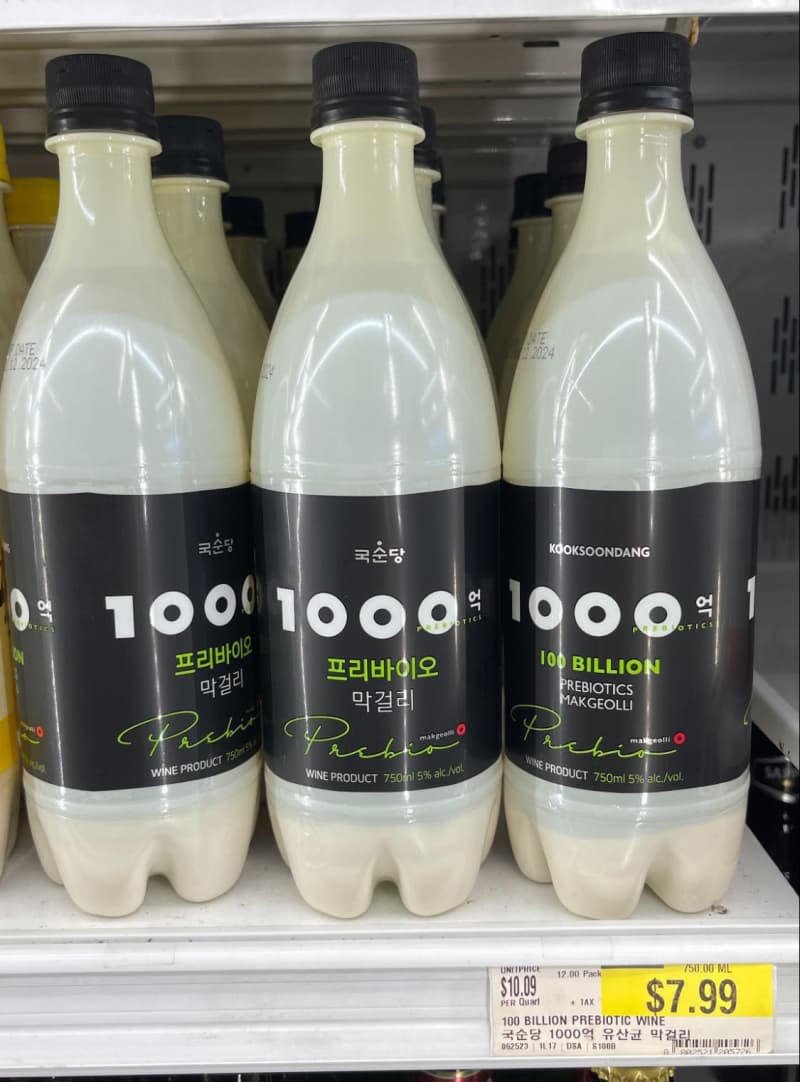
Too Sour: 100 Billion Prebiotic Wine, $7.99 for 750 mL
This makgeolli is also produced by Kooksoondang, and advertises itself as including 100 billion prebiotics. It’s also the only makgeolli on the list that is 5% ABV; all the others are 6%.

It’s not as fizzy as the Kooksoondang Draft Makgeolli, but it’s definitely incredibly funky in a way that I have never smelled in a makgeolli (and not necessarily super pleasant?). The flavor leans heavy on lactic acid and yogurt and gets sweeter the more you drink it and get used to the sour smell. This one feels a little more gimmicky — especially at the higher price point.
Did your favorite make the list? Tell us about it in the comments below.

